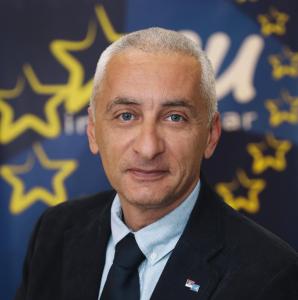A clean-up of sunken WWII ships makes for safer Danube navigation and a boost for Serbia’s economy
Cleaning of Danube riverbed for faster navigation
The Danube is the second-longest European river flowing through as many as ten countries. It is formed by the confluence of two smaller rivers in the Black Forest mountain range in Germany, flows into the Black Sea in Romania and is part of the Rhine–Main–Danube Canal. Its entire course in Serbia (588 km) is navigable, but the Danube waterway is significantly narrower at the Djerdap gorge, due to the many vessels that were sunk there near the end of the World War II.
A European Investment Bank-backed project to remove these sunken vessels is of great significance, because the waterway is only 180-metre wide in that section of the Danube, downstream of Prahovo port, and the 23 vessels narrow the waterway to just 100 metres. The sunken ships jeopardise navigation, especially during low water periods. The first part of the project deals with finding the right way to demine and remove dangerous substances from the vessels, as well as finding the exact locations of the ships.
“Making navigation of the Danube safe again is the way we like to operate: removing obstacles, and tearing down visible and invisible barriers, in this case below the water surface,” says Sem Fabrizi, the EU Ambassador to Serbia. “I am proud that the EU is part of this important project to help bring the Danube back to its role as a vital artery of the European continent.”
EU integration is first and foremost a process of peace and unity. Since its foundation, the EU has been focused on overcoming the difficulties of the past and clearing the way for further integration. “Our commitment is to make Serbia and the whole Western Balkans region part of this great adventure,” says Fabrizi.

Faster and safer Danube navigation
The project to remove the vessels that have been lying on the bottom of the Danube for more than seven decades will be financed by an extremely favourable loan from the European Investment Bank in cooperation with the Government of Serbia. The cleaning of the riverbed will make navigation in this part of the river far safer and faster. Some parts of the ships will be exhibited, and the rest will be returned to Germany.
The investment will improve river traffic in Serbia, because the country loses up to €5 million per year due to unsafe navigation in this section of the Danube, according to former Construction, Transport and Infrastructure Minister Zorana Mihajlovic. The presence of the ships on the riverbed has a negative impact on the environment, as well.
Dubravka Negre, Head of the EIB in the Western Balkans, said that this project is of great historical importance and is also important for the economic development of Serbia. “Everyone in this country is emotionally attached to this river that unveils important tales of the past,” she says.
“It represents an invaluable natural resource for energy, food and drinking water, generating 22% of the national energy supply. At the same time, it stretches along a pivotal navigation route, offering cost-efficient transit opportunities within regional and EU markets.”
By contributing to the expansion of international economic ties, Negre adds, it reconnects the people of the Balkans, who share the same past. Today, after many decades, they can meet on the same path towards a new, common market with European values and prospects for a better tomorrow.
Unique transport project for the EU bank
Serbia is the only non-EU country where the EIB invests in water transport. The Danube is part of a Pan-European Corridor and the implementation of this project will significantly contribute to faster and more efficient transport of goods to EU Member States, which in turn contributes to Serbia’s economy.
The European Investment Bank has been active in Serbia since 1977, having invested more than €6 billion in various projects. The biggest portion of funds—almost 40% (€2.1 billion)—was invested in transport projects with €165 million invested in the energy sector.
